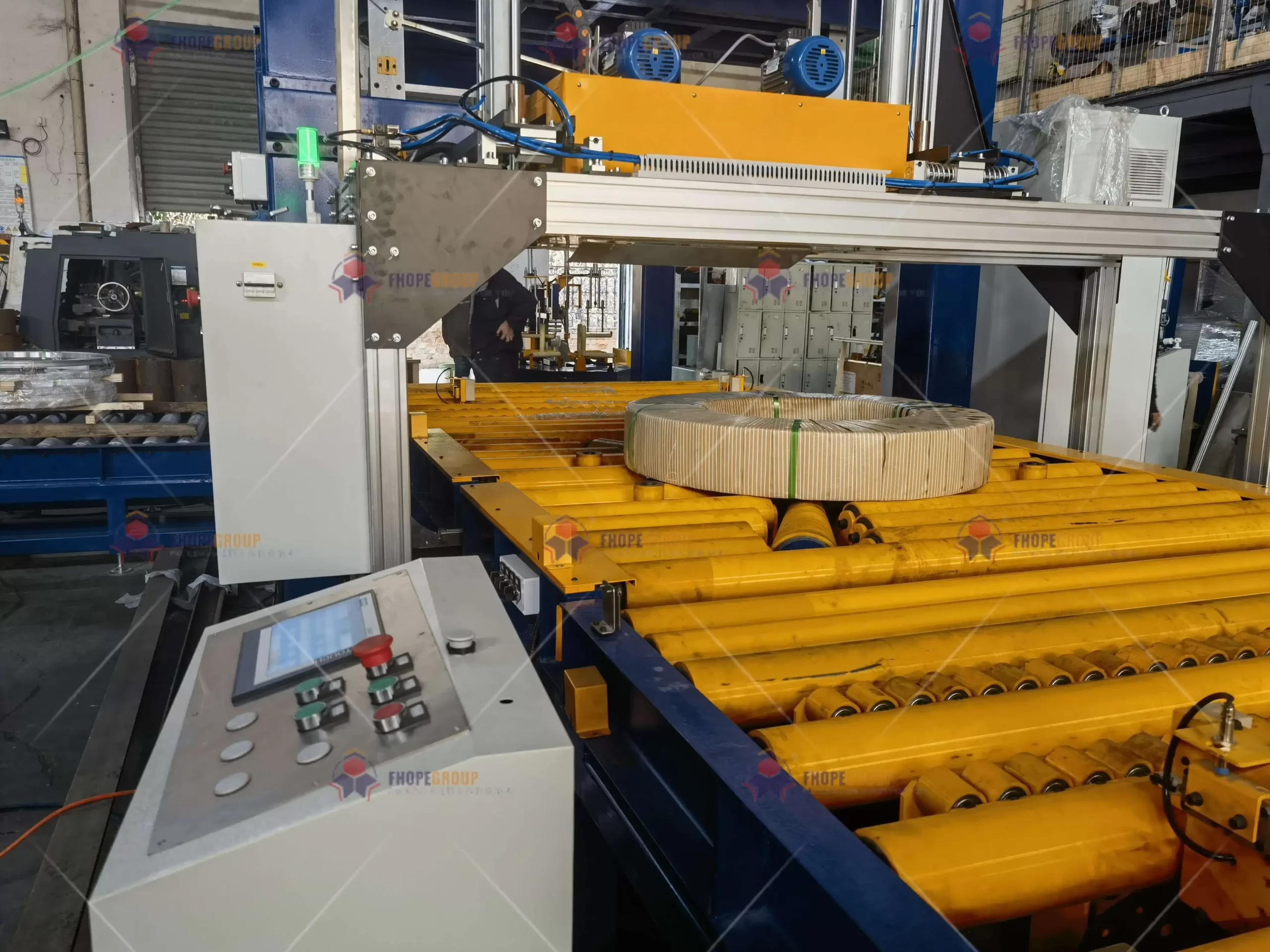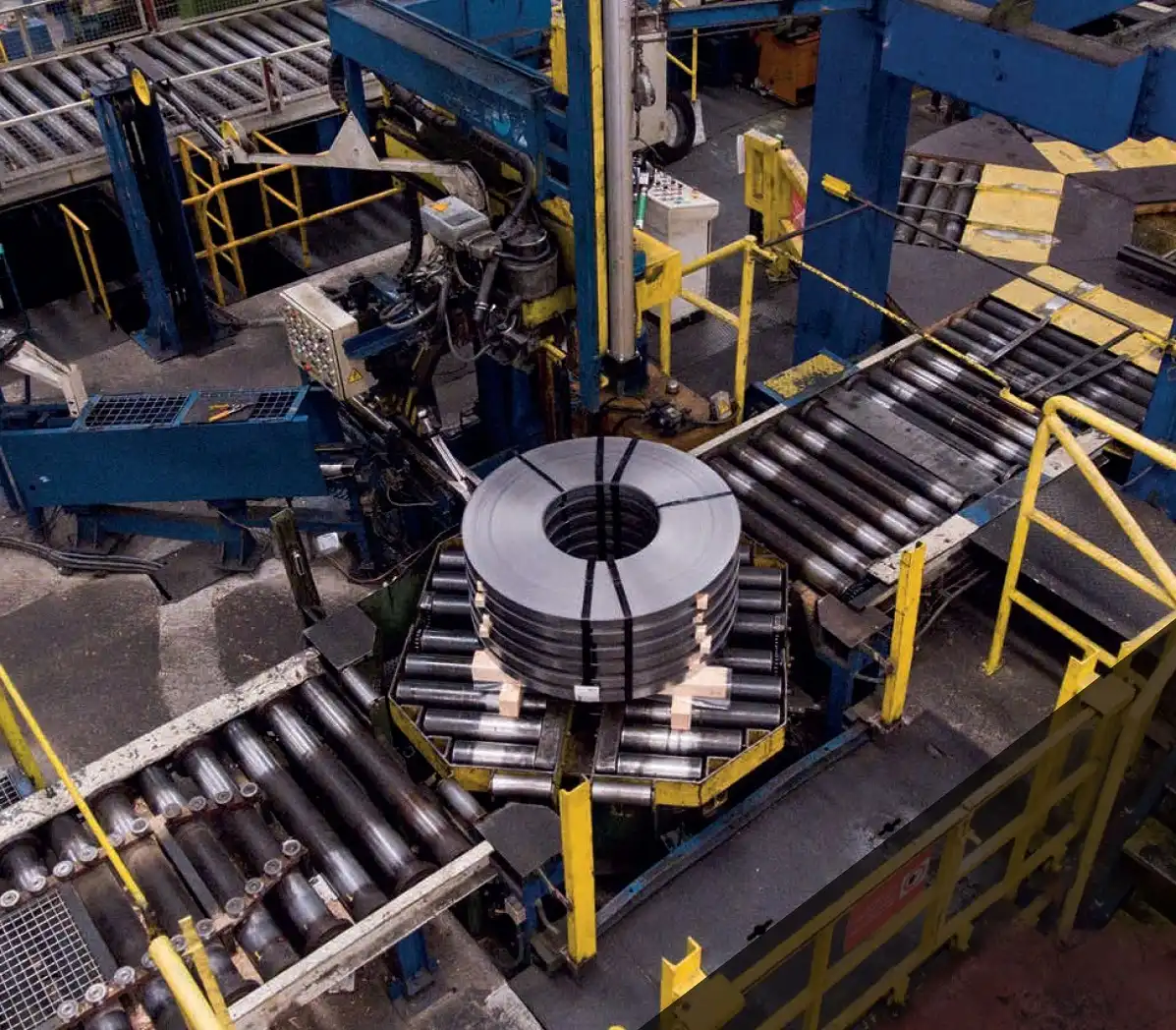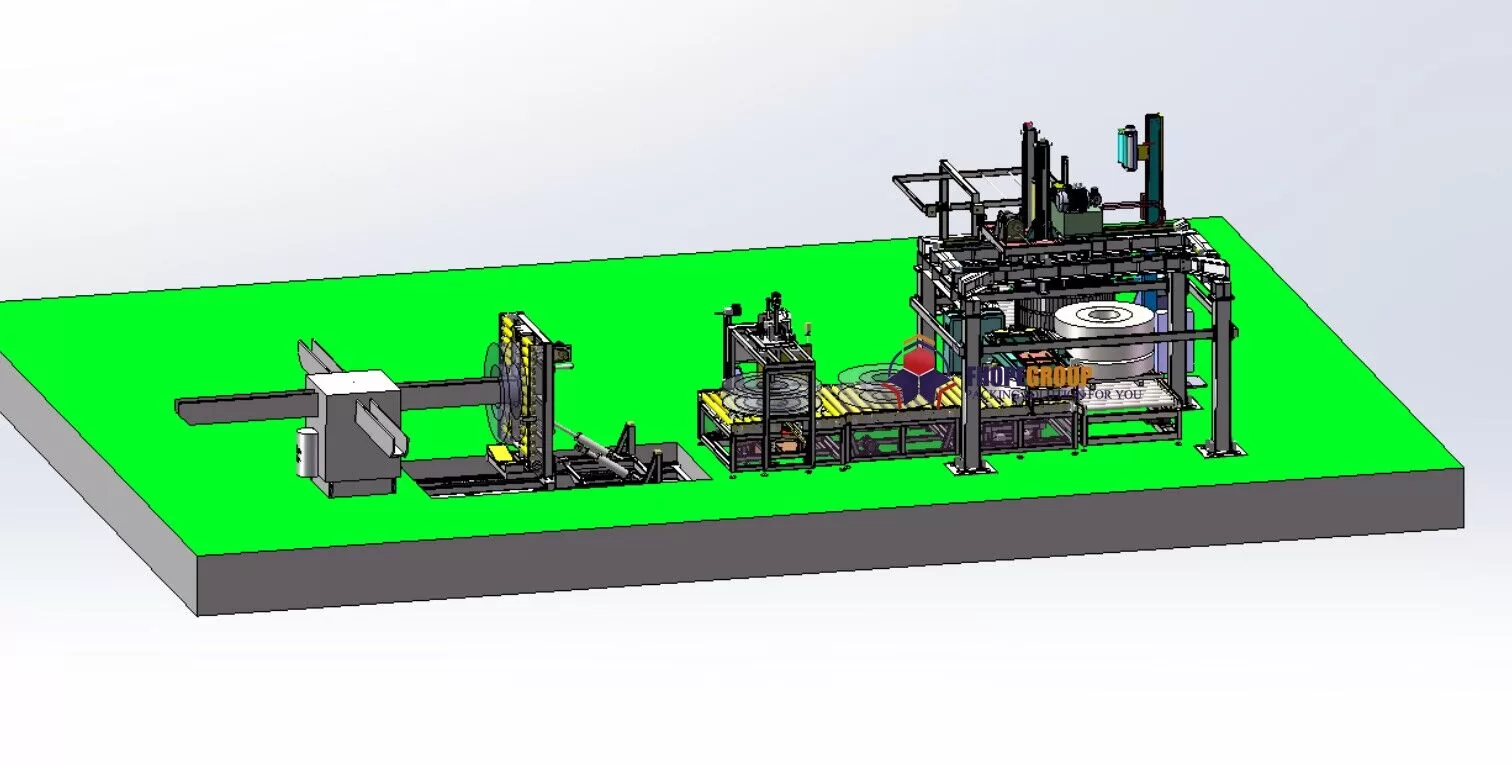Are you feeling the pressure? In Argentina's steel industry, costs for energy and labor are always a concern. Your existing equipment might be getting old, leading to more downtime and higher maintenance bills. This constant battle against inefficiency can feel overwhelming. It makes you worry about your plant's profitability and its ability to compete. But what if you could turn one of your biggest cost centers, your packaging line, into a source of efficiency and reliability? The right coil wrapping system is not just a machine; it's a strategic move to secure your future.
Before buying a coil wrapping system, Argentine plant managers must evaluate four key areas. First, understand the Total Cost of Ownership (TCO), not just the initial purchase price. Second, confirm the system's ability to integrate with both your current aging equipment and your future digital factory goals. Third, assess whether the supplier acts as a long-term strategic partner or just a short-term vendor. Finally, analyze how the machine's design and features will directly improve operational efficiency and simplify maintenance to guarantee uptime.

I have spent my entire career in the packing machine industry. I started on the factory floor and eventually built my own successful company, SHJLPACK. I have seen firsthand what separates a successful investment from a costly mistake. It is not just about the steel and motors. It is about a smart, forward-thinking approach. Let’s walk through the critical questions you need to ask. I want to help you make a decision that you will be proud of for years to come.
How Can I Accurately Calculate the ROI of a New Coil Wrapping System?
You see a price tag for a new coil wrapping system, but you know the real story is much more complex. You have to justify this expense to your board or your partners. The fear is that hidden costs will appear later, or the promised savings will never materialize. This uncertainty can paralyze decision-making, leaving you stuck with inefficient, outdated equipment that slowly hurts your bottom line. It's a common problem I've seen in many plants across South America.
The key is to look beyond the initial purchase price and calculate the Total Cost of Ownership (TCO). A true ROI calculation must include savings from reduced labor, lower packing material consumption, and decreased product damage, measured against all costs, including installation, training, maintenance, and energy over the machine's lifespan. This comprehensive view will reveal the true financial impact on your operation.

Deeper Dive: From Price Tag to Profit Center
Calculating the real return on investment (ROI) requires a practical, detailed approach. As an engineer who had to manage my own factory's finances, I learned to scrutinize every detail. A new machine is a major capital expenditure. You need to be confident it will pay for itself and contribute to your profit goals. Let's break down how to think about this.
Beyond the Purchase Price: Total Cost of Ownership (TCO)
The number on the quote is just the beginning. A smart manager, like yourself, knows the real cost includes many other factors. You must consider the TCO to make an informed decision. I always advise my clients to create a simple table to compare options. It brings clarity to a complex choice.
| Cost Category | Option A: Low-Cost Machine | Option B: Strategic Investment (SHJLPACK) |
|---|---|---|
| Purchase Price | Lower Initial Outlay | Higher Initial Outlay |
| Installation & Commissioning | Often extra, may require your own team | Usually included, turn-key service |
| Consumables (Film/Paper) | Standard usage, potential for waste | Optimized usage, pre-stretch saves 20-30% |
| Energy Consumption | Standard motors, higher kWh | Energy-efficient motors, VFDs reduce power |
| Spare Parts | Proprietary, expensive, long lead times | Standardized parts, local sourcing possible |
| Annual Maintenance | Frequent downtime, higher labor costs | Predictive maintenance alerts, less downtime |
| Operator Training | Minimal, basic manual | Comprehensive on-site training |
| Estimated 5-Year TCO | Can exceed Option B | Lower long-term cost, predictable |
Calculating Your Real Savings
Now, let's look at the other side of the equation: the savings. This is where the machine starts paying you back.
- Labor Savings: Calculate how many man-hours you will save per day, per week, and per year. Don't forget to include the cost of benefits and overhead. A fully automatic line can often re-assign two to three workers per shift to more value-added tasks.
- Material Savings: A modern wrapping machine with a powered pre-stretch system can stretch wrapping film by 200-300%. This means one meter of film becomes three or four meters. This directly cuts your consumable costs. Ask for a specific calculation based on your coil sizes and daily output.
- Product Protection: How much money do you lose each year due to coils damaged during transit or storage? Improper or insecure wrapping is a common cause. A well-wrapped coil is protected from moisture, dust, and physical impact. This reduces customer complaints and claims, which protects both your revenue and your reputation.
When I started my factory, I faced a similar choice for a different piece of equipment. I was tempted by a cheaper option. But after doing this TCO analysis, I realized the "cheaper" machine would have cost me more in just three years due to higher maintenance and lower efficiency. I chose the better machine. It was a tough decision at the time, but it was the right one. It taught me that a good investment is not an expense; it is a tool for growth.
How Do I Ensure a New Machine Integrates with My Aging Production Line and Digital Goals?
Your plant is a mix of the old and the new. You have reliable, hardworking machines that are over 15 years old, running alongside newer technology. Now you want to bring in a new coil wrapping system. The big worry is creating a technological island. Will the new machine communicate with your existing conveyor systems? How will it fit into your long-term goal for a fully digitized, "smart" factory? A failed integration project can cause massive disruptions, create production bottlenecks, and turn a promising upgrade into a constant headache.
To ensure seamless integration, you must address two levels: physical and digital. Physical integration means confirming mechanical and electrical compatibility with your existing line, including conveyor heights, speeds, and safety circuits. Digital integration involves planning for data exchange from day one. The new machine must be able to send and receive signals from your MES (Manufacturing Execution System) or SCADA systems, providing the production data you need to manage your plant effectively.

Deeper Dive: Building Bridges Between the Old and the New
Integration is one of the most common challenges I help clients solve. It's a puzzle with many pieces. A successful integration project is the result of careful planning and clear communication with your equipment provider. Your goal is to make the new machine a natural extension of your existing workflow, not a difficult exception.
Mechanical and Electrical Integration
This is the ground level of integration. It has to be right, or nothing else matters.
- Physical Footprint: Does the machine physically fit in the space you have? We provide detailed layout drawings early in the process so you can check for any conflicts with building columns, walkways, or other equipment.
- Conveyor Connection: The entry and exit points of the wrapping machine must perfectly match your existing conveyors. This includes height, width, and speed. We often design custom transition conveyors to ensure a smooth flow of coils without bumps or jams.
- Safety Systems: Your plant has an established safety protocol. The new machine's E-stop circuits, light curtains, and safety fences must be wired into your plant-wide safety system. This is non-negotiable. We work with your engineers to ensure all safety standards, both local to Argentina and international, are met.
Data Integration for a Smart Factory
This is where you turn your machine into an information source. Many Argentine plant managers I speak with have ambitious goals for digitalization. They want to achieve the kind of visibility and control that modern data provides. Your coil wrapper can be a rich source of this data.
| Integration Level | Description | Data Exchange |
|---|---|---|
| Level 1: Standalone | The machine operates independently. An operator manually starts and stops it. | None. Production data is tracked manually. |
| Level 2: Basic Handshake | The machine signals to upstream/downstream equipment. (e.g., "I am ready for a coil," "I am finished.") | Simple On/Off signals via relays. |
| Level 3: Full MES/SCADA | The machine is a node on your factory network. It receives packaging "recipes" and reports back detailed data. | Ethernet/IP, Profinet. Sends cycle time, material usage, fault codes, coil ID. |
We design our control systems with this in mind. We use PLCs from globally recognized brands like Siemens or Allen-Bradley. This makes it much easier to connect to your existing factory network. You can track each coil by its ID, know exactly how much packing material was used, how long the cycle took, and be alerted to any potential maintenance issues before they cause a stop. This is the first step toward predictive maintenance and achieving your goal of 95% uptime. You are not just buying a wrapper; you are buying a data node for your smart factory.
What Separates a Simple Supplier from a True Strategic Partner?
You have been in this industry for a long time. You have dealt with countless suppliers. Some are great, but many disappear the moment the final payment is made. When a machine goes down, you are left struggling with a time-zone difference, a language barrier, and a service department that does not understand the urgency. This is a huge risk. A machine that is not running is not making you money. You are not looking for another box-mover. You need a partner who is invested in your success, someone who will be there to support you for the life of the machine.
A true strategic partner demonstrates their value long before the sale and long after installation. They act as a consultant, helping you choose the right solution, not just the most expensive one. They provide comprehensive, on-site installation and training to empower your team. Most importantly, they offer reliable, long-term support with readily available spare parts and expert technical advice. Their success is tied to your operational excellence.

Deeper Dive: The Partnership Payoff
My entire philosophy for SHJLPACK is built on this idea of partnership. When I started my own factory, I relied on the expertise of others. Now, my goal is to give back that same level of support. My company's slogan is "TOTAL SOLUTION FOR WRAPPING MACHINE" for a reason. It is a promise. It means we are with you for the entire journey. Let's look at what this partnership looks like in practice, compared to a typical supplier relationship.
The Difference in Approach
| Aspect | Standard Supplier (Vendor) | Strategic Partner (SHJLPACK) |
|---|---|---|
| Goal | Sell a machine. | Solve your packaging problem. |
| Process | Sends a standard catalog and quote. | Asks about your coils, workflow, and goals. Proposes a customized solution. |
| Expertise | Product features. | Process optimization, integration, material science. |
| After-Sales | A phone number for a service desk. | A dedicated engineer, scheduled check-ins, proactive support. |
Pre-Sale Consultation and Customization
A partnership begins with listening. Before I ever suggest a machine, I need to understand your specific situation. What is the weight and size range of your coils? Are they slit coils or master coils? Do you need to wrap through the eye of the coil? What are your production speed requirements? The answers to these questions determine the right machine. For one client, we designed a custom conveyor system to handle both narrow and wide coils on the same line, saving them the cost of a second machine. A simple vendor would have just sold them two.
Installation, Training, and Commissioning
This is a critical phase. A partner doesn't just ship you a machine in a crate. We send our own engineers to your plant in Argentina. They supervise the installation, connect the machine to your services, and perform rigorous testing. But the most important job they have is training your people. We don't leave until your operators can run the machine confidently, and your maintenance team understands how to care for it. I believe a well-trained team is the best guarantee of a machine's long-term performance. This is why our mission is to be a knowledge-sharing platform. We want to empower your crew.
Long-Term Maintenance and Support
The real test of a partnership comes months or years after installation. What happens when you need a spare part? Or when you want to adapt the machine for a new type of packing material? We build our machines with globally sourced, high-quality components (like Siemens, SKF, Festo). This means you can often find replacements locally in Argentina if needed. For proprietary parts, we maintain a full inventory and can ship them quickly. Our support is ongoing. We are here to help you grow, because your success is our success.
How Can I Make Sure This Investment Isn't Obsolete in Ten Years?
You are a forward-thinking leader. You are not just solving today's problems; you are building a company for the future. When you invest a significant amount of capital in a new wrapping system, the last thing you want is for it to become a technological dinosaur in a few years. New safety regulations, changing environmental standards, or a shift in your product mix could make a rigid, inflexible machine obsolete. This fear can lead to hesitation, but standing still is not an option either.
To future-proof your investment, you must prioritize modularity, scalability, and adaptability. Choose a machine with a modular design that allows for future upgrades, like adding an automatic top-sheet dispenser or a labeling system. Ensure its control system uses non-proprietary software and hardware that can be updated. Finally, select a system built with the flexibility to handle different packing materials and to be modified to meet future environmental and safety standards.

Deeper Dive: My Insight on Building for Tomorrow
This is the most important question for a leader to ask. It goes beyond simple ROI and gets to the heart of long-term strategy. I built my business by thinking about where the industry was going, not just where it was. I want to share my personal insight on this. An intelligent investment in equipment is an investment in flexibility. The world changes, markets shift, and your plant must be able to adapt.
Modularity and Scalability
Think of your coil wrapping line like building blocks. You start with the core function: the wrapping machine itself. But what if, in two years, you need to add automatic strapping? Or a weighing station? Or a robotic label applicator? A modular design makes this possible.
- Modular Construction: Our machines are designed in functional blocks. The wrapping station, the conveyors, the strapping unit—they are all separate modules that communicate with each other. This means you can add or change modules later without replacing the entire line.
- Scalability: Maybe your production capacity is X today, but you plan for it to be 1.5X in five years. We can design the system with a control panel and core structure that can handle that future capacity. The initial investment might be slightly higher, but it saves you from a massive reinvestment down the road. It's about planning for the success you are working toward.
Software and Control System Upgradability
The brain of the machine is its PLC and HMI. This is an area where technology changes fast.
- Open-Source Philosophy: We use industry-standard PLCs like Siemens. We provide you with the source code. This is very important. It means you are not locked into us for every little change. Your own engineers can make adjustments, or you can hire a local integrator in Argentina to do it. You have control over your own equipment.
- Remote Access: Modern systems should have a secure remote access module. If you have an issue, our engineers can log in directly from our office to diagnose the problem. This can save you days of downtime compared to waiting for a technician to fly in. This also allows for remote software updates to improve performance or add new features.
Adapting to Environmental and Safety Standards
Regulations are only going to get stricter. In Europe, there are already rules about plastic usage. These trends often spread globally. A future-proof machine must be adaptable.
- Material Flexibility: Can your machine handle both stretch film and VCI paper? Can it be adjusted to use thinner, more efficient, or even biodegradable films as they become available? Our tension control systems and wrapping applicators are designed to be highly adjustable for this very reason.
- Safety Upgrades: Safety standards evolve. A modular safety system (using safety PLCs) allows you to easily add new components, like area scanners or more advanced light curtains, to meet future requirements without a complete electrical overhaul.
Investing in a machine that can grow and change with you is the ultimate strategic move. It transforms a piece of equipment from a depreciating asset into a flexible platform for future growth.
Conclusion
Choosing the right coil wrapping system is more than a purchase. It is a strategic decision for your plant's future in Argentina. Focus on partnership and long-term value.





